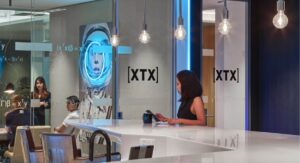Domestic rating agency Icra on Wednesday revised downwards its outlook for the banking sector to ‘stable’ from ‘positive’ on expectations of a moderation in credit growth and profitability. The agency said the credit growth will moderate to 11.6-12.5 per cent in FY25 from 16.3 per cent (excluding the impact of the HDFC twins merger) in FY24, while the lower net interest income margins on higher deposit rate payouts will lead to a dip in profits.
On the asset quality front, it expects a further moderation in the gross non-performing assets ratio for the banking system at 2.2 per cent by March 2025 from 3 per cent likely in March 2024, its vice president Sachin Sachdeva told reporters.
This will be the lowest level since September 2011, Sachdeva added.
Unsecured retail advances and loans to non-bank finance companies will slow down in FY25, leading to a dip in the overall non-food credit growth in the system, the agency said.
The RBI’s curbs on unsecured lending by way of increasing the risk weights in November have already led to a reduction in the incremental disbursements of such loans to over 23 per cent from 29.4 per cent earlier, it pointed out.
However, challenges on deposit mobilisation will continue in FY25, and banks will have to hike deposit rates to attract the funds, the agency said, adding that the credit deposit ratio, which has reportedly come under the regulatory gaze lately, will continue to be elevated at over 80 per cent.
The agency said it expects a “convergence” between credit and deposit growth in FY25, which will be helpful for the system, given the four percentage point gap that exists at present.
The share of the low-cost current and savings account deposits will also moderate as customers continue preferring the higher-yielding term deposits. This will put pressure on the net interest margins (NIMs) for banks, it added.
NIMs have been under pressure for the last two years and will further moderate in FY25, as the impact of deposit rate hikes plays out, its senior vice president Anil Gupta said.
This will lead to an impact on the profitability, the agency said, pointing out to the performance witnessed during the first nine months of FY24, where the numbers are known.
A growth in operating expenses will also hurt the profits, it noted.
However, credit costs, a key number impacting profits in the past, are expected to be benign for FY25, courtesy the advantages on the asset quality front, and will help compress the impact of other factors hurting profit growths, the agency said.
In the data available for FY24, the state-run lenders have come out better on fresh slippage accretion compared to the private sector banks, which are otherwise considered more lean and diligent.
Gupta explained that a larger proportion of corporate advances has helped the public sector banks report better performance on slippages against the private sector ones, which have a larger focus on retail and small business loans.
The gross fresh NPA generation at state-owned banks is expected to come at 1.3 per cent in FY24, and go up to 1.5 per cent in FY25, while the same at private sector banks is estimated at 2 per cent and 2.2 per cent, respectively, the agency said.
It said that the proportion of unsecured loans is still very low in the overall advances mix, and any increase in stress from such advances will not cause any serious issues.
The agency observed that the RBI will implement the expected credit loss-based provision system from April 1, 2025. However, for two banks with lower levels of capital buffers, the system is well-placed to take on the change.
Overall, from a capital buffers perspective, the system is well placed right now, it said.
Gupta said if the market expectations on the ruling BJP retaining power come true, there can be some upside on corporate credit growth as a larger number of companies get enthused to invest due to policy stability, while the agenda on bank privatisation will also go ahead once the IDBI Bank sale goes through.










